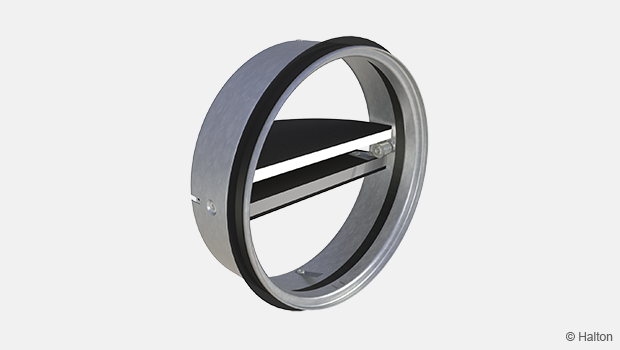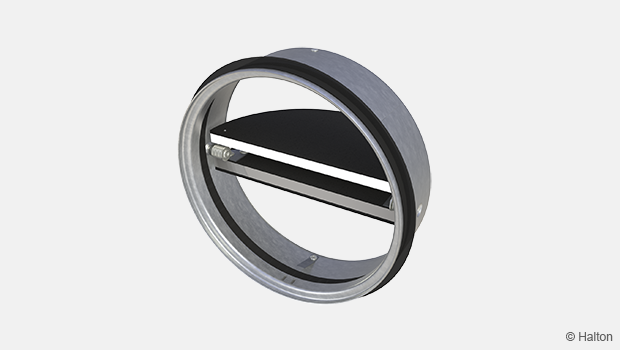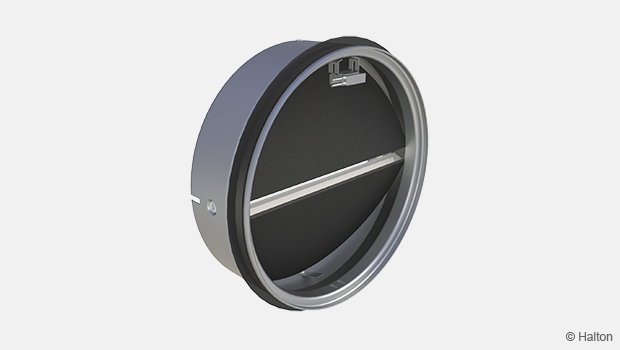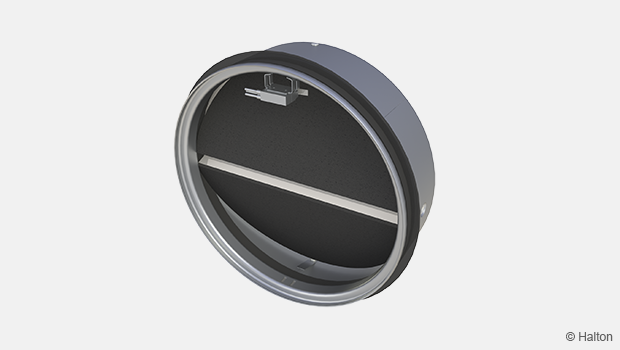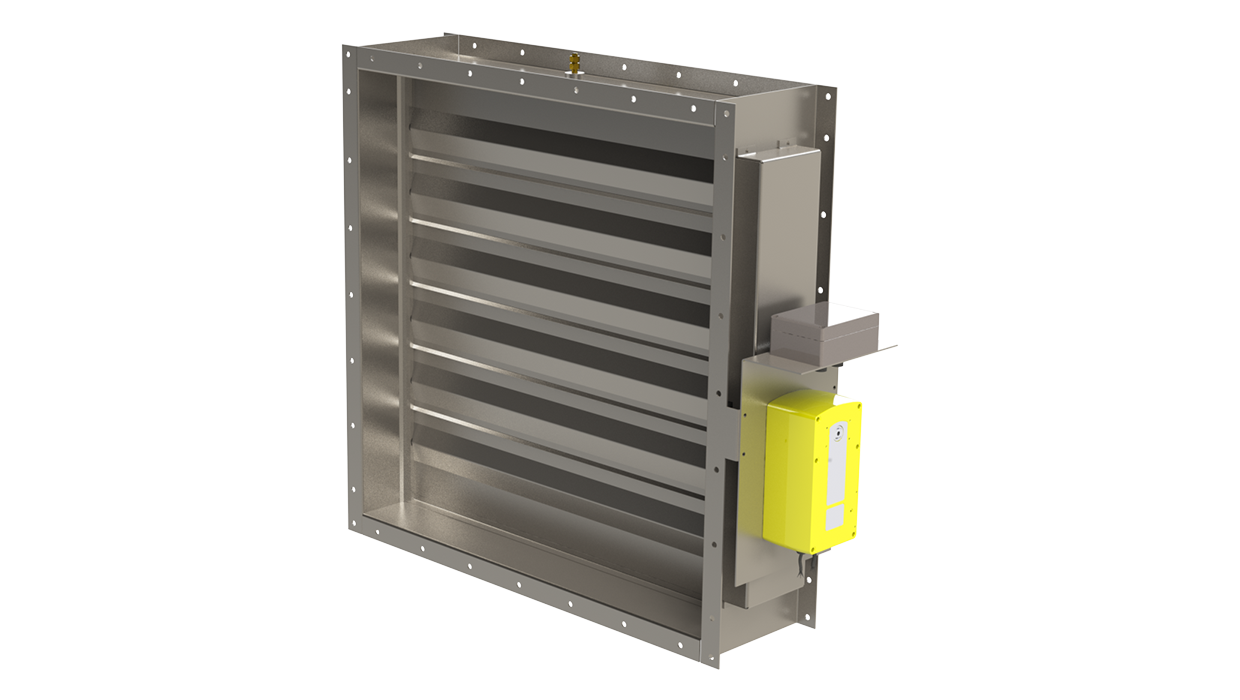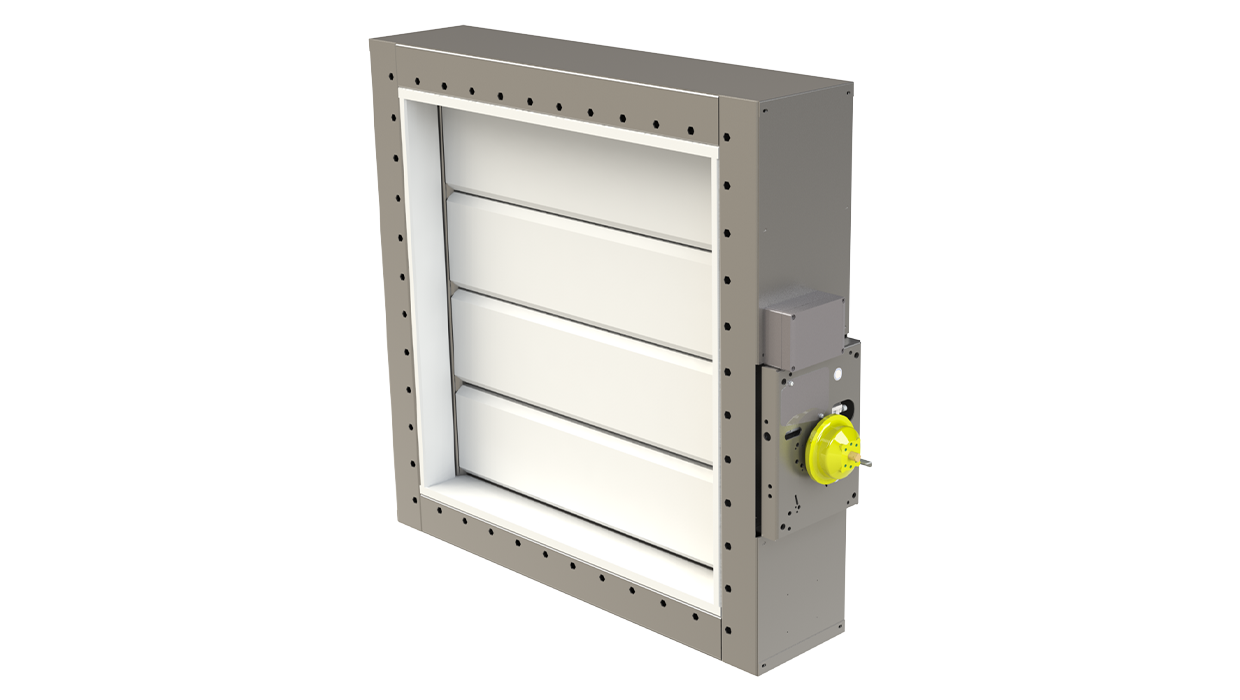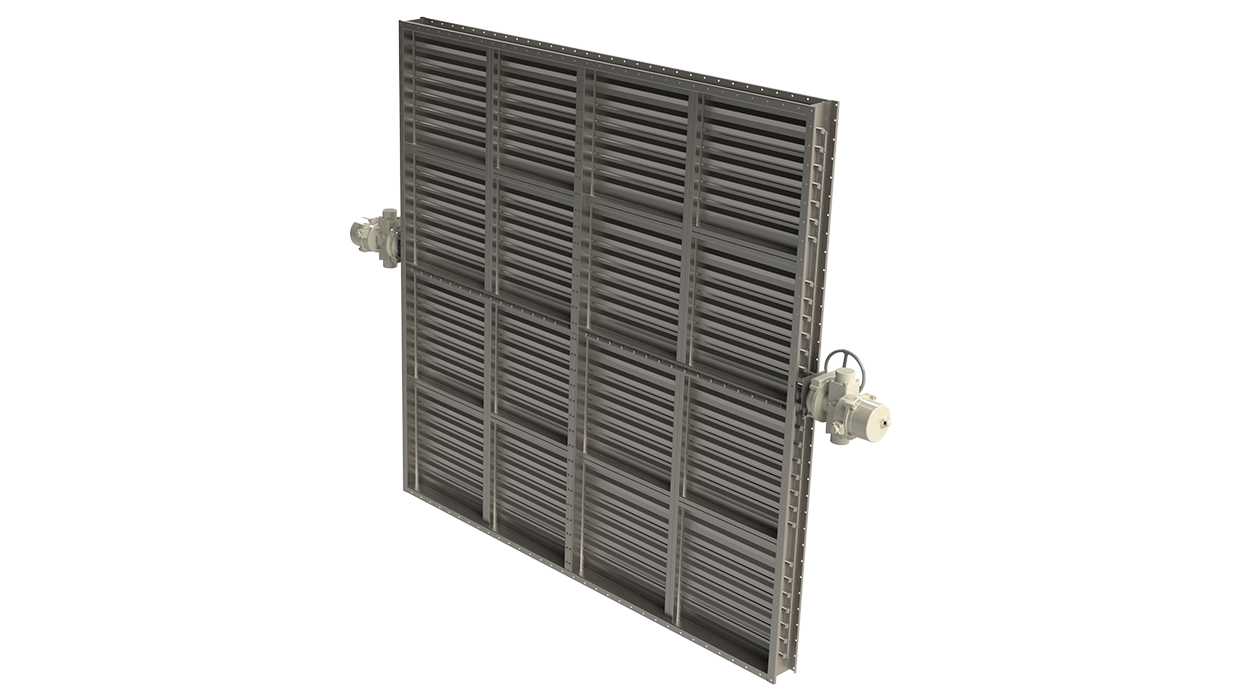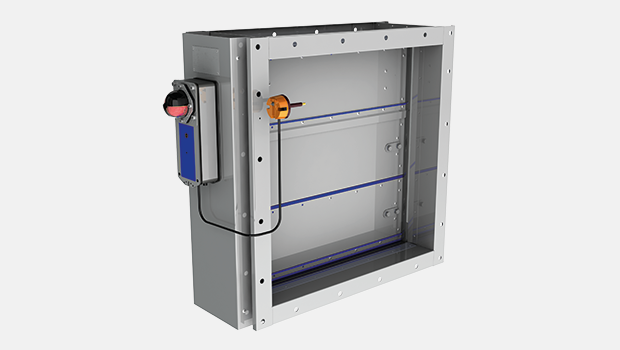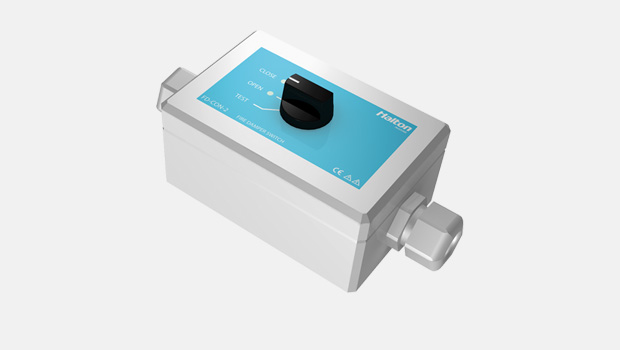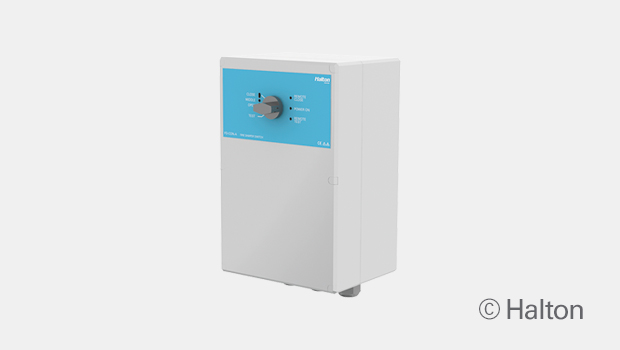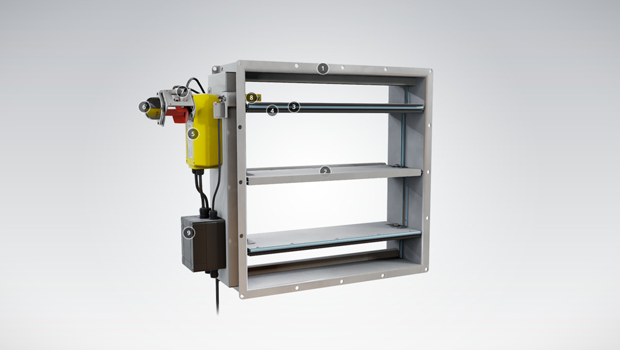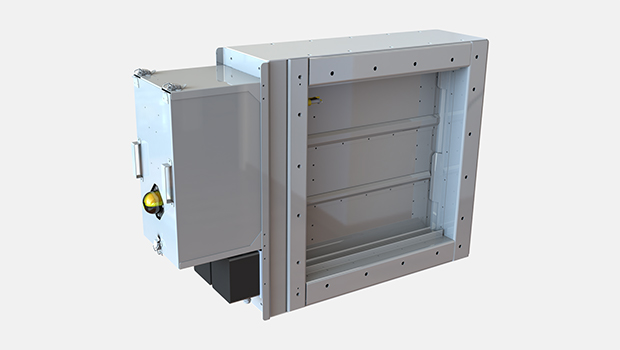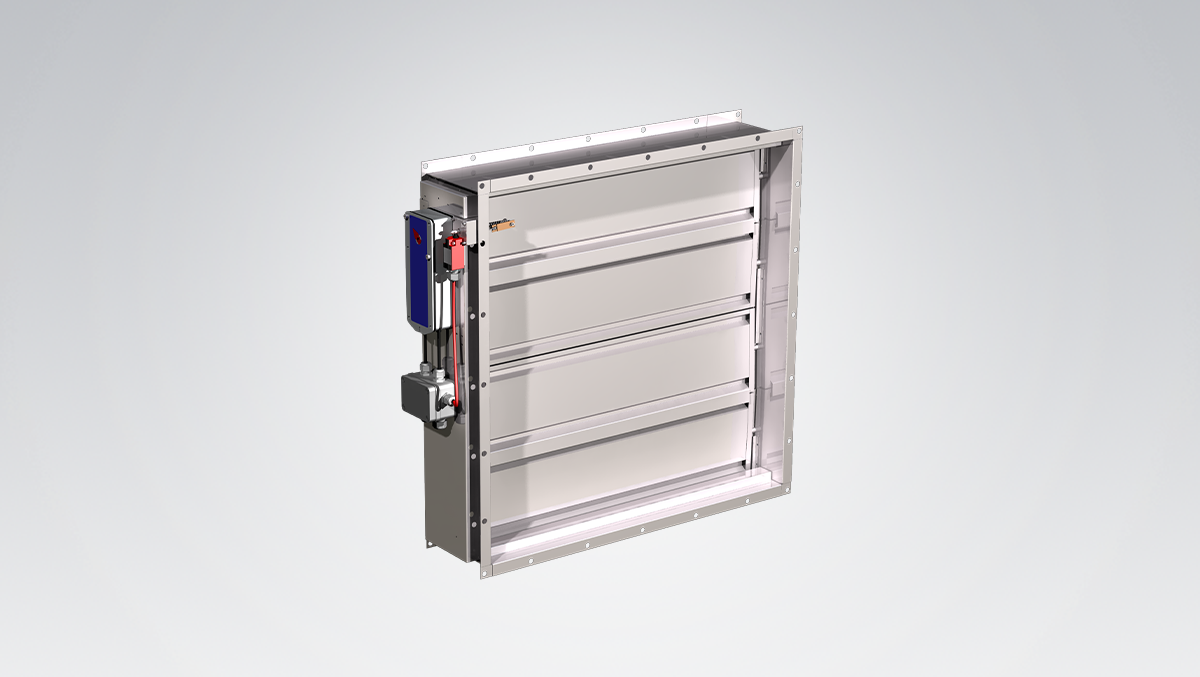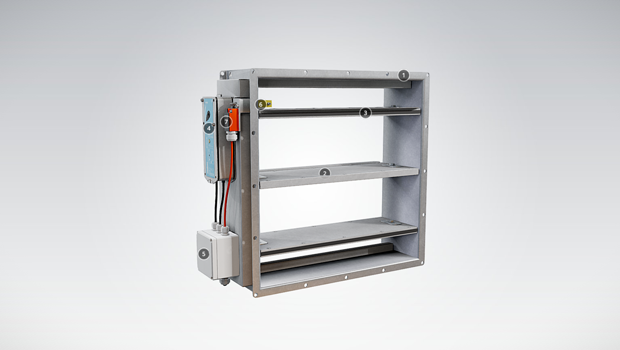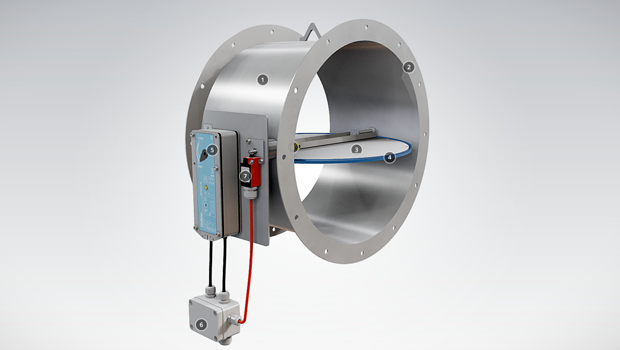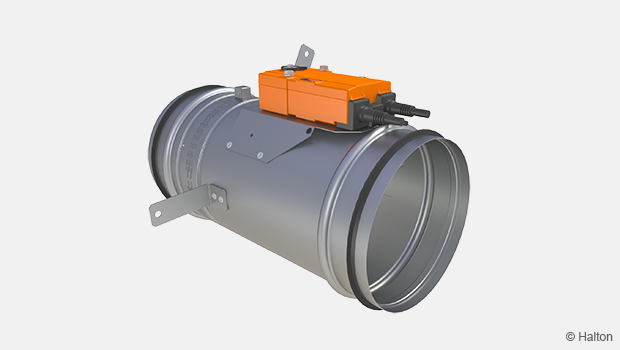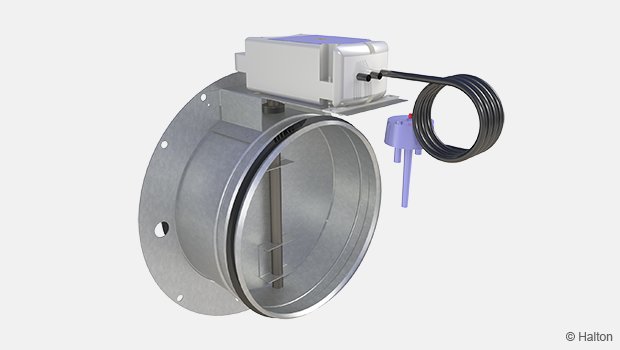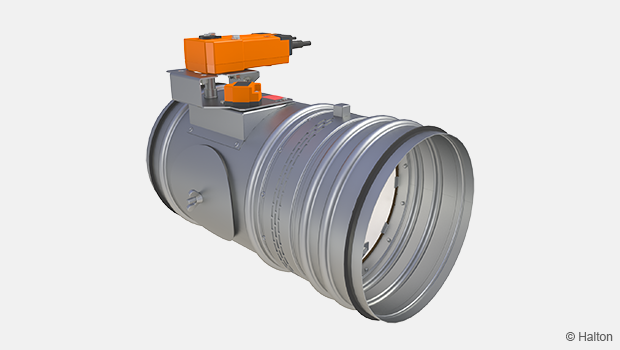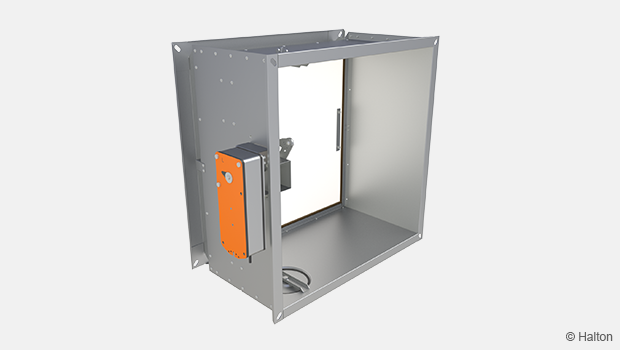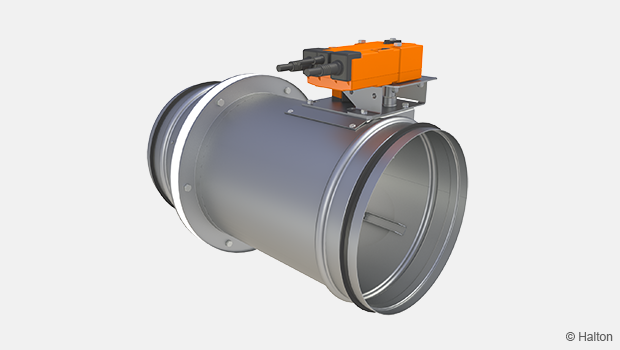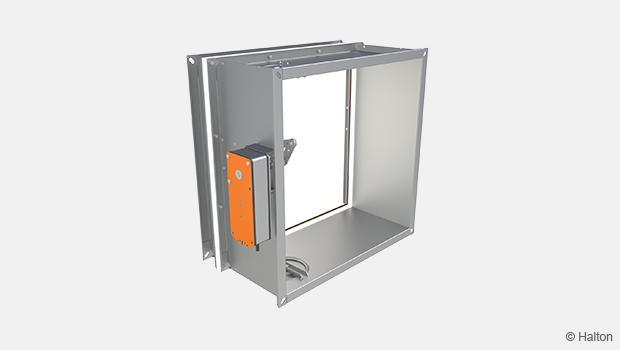Product / EFC
Halton Exe EFC – Fire damper (EI 120 S)
This CE marked fire damper has the shortest depth of any fire damper in the market so utilizing minimal space.
It can be also installed inside the duct near with e.g. supply or exhaust valve.
Fire resistance class is provided up to EI 120 S requirements.
- Vertical (wall) installation EI 120 S
- Vertical (wall) and horizontal (ceiling/floor) installation EI 60 S
Overview
This fire damper model has the shortest depth of any fire damper in the market so utilizing minimal space. It is suitable for both vertical and horizontal installation in concrete, masonry or lightweight structures. The fire damper can be also installed inside the duct near with e.g. supply or exhaust valve. The fire resistance class is provided up to EI 120 S requirements.
Features
- Supplied with mechanical spring release (failsafe)
- Sizes from Ø100 mm up to Ø200 mm are available
- Maximum air velocity through fire damper in open position is 12 m/s
- Suitable for use in ducts with a maximum pressure difference of 1500 Pa
- Galvanised steel frame construction
- No spare parts or additional installation frames needed, regardless of installation method
Installation options
- Suitable for vertical (wall) installation up to EI 120 S
- Suitable for vertical (wall) and horizontal (ceiling/floor) installation EI 60 S
- Spindle of the blade and the mechanical spring release can be installed in any position (360°) in wall installation
- CE marked for installation in concrete, masonry or lightweight constructions with fire resistance classes of EI 120, EI 90 or EI 60
- Limit switch available as an accessory
Standards
This product complies with the following standards:
- CE certified according to product standard EN 15650
- Fire classification according to EN 13501-3+A1 standard
EI 120 (ve i↔o) S, EI 60 (ve ho i↔o) S - Fire testing according to EN 1366-2
- CE certificate of Constancy of Performance 1391-CPR-2018/0205
- Declaration of Performance No:10028-EFC-2019/01/01
- Leakage through closed fire damper fulfils class 2 according to EN 1751
- Damper casing tightness class is the same as the tightness class of duct according to EN 1751
Dimensions and weight
Fire resistance classes, EI 60 S and EI 120 S
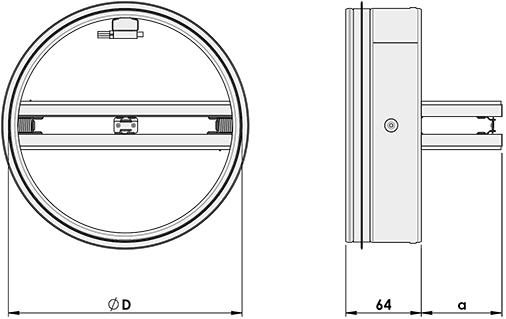
| NS | ØD |
| 100 | 98 |
| 125 | 123 |
| 160 | 158 |
| 200 | 198 |
Overlap of blade (mm)
| NS | a |
| 100 | 17.5 |
| 125 | 30.2 |
| 160 | 48.0 |
| 200 | 68.0 |
Weight (kg)
| NS | With mechanical spring release |
| 100 | 0.3 |
| 125 | 0.4 |
| 160 | 0.6 |
| 200 | 0.8 |
Material
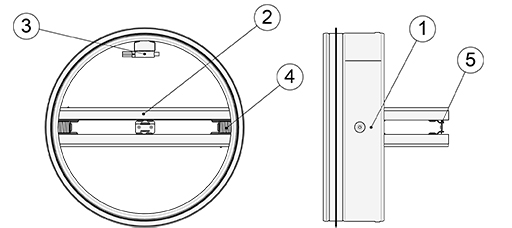
| Nr | Part | Material | Note |
| 1 | Casing | Galvanised steel | – |
| 2 | Blade | Asbestos free boards made of mineral fibre, both sides coated with special expansion coating |
EI 120 S |
| Asbestos free boards made of mineral fibre, one side coated with special expansion coating |
EI 60 S | ||
| 3 | Limit switch | – | Accessory |
| 4 | Shutting spring | Stainless steel | – |
| 5 | Fuse | Sheet brass | – |
Operating model
Mechanical spring release (failsafe)
In Halton Exe Fold Circular fire damper with mechanical spring release, the fuse reacts to the rise of temperature (72 ºC) and the mechanical spring closes the damper blade. It needs to be opened manually.
The limit switch (accessory, see Fig.1.) indicates the damper blade position. When the damper blade is open (safe position), the limit switch indicates this position. If the damper blade is closed (failsafe), the limit switch sends an impulse to the monitoring system. This system triggers an alarm and/or stops/starts fans, depending on the designed system. The limit switch has no influence on the thermal fuse or release mechanism.
Fuse can be replaced by removing the fire damper from the duct and placing it back after adjusting.
The maximum operating voltage and current is 230 V, 5A.
| Limit switch | LS1 | Closed position indication, enclosure class IP 67 |

Fig.1. Halton Exe Fold Circular equipped with a limitswitch
Function
The Halton Exe Fold Circular fire damper is CE certified for vertical (ve) installation in concrete, masonry or lightweight walls fulfilling the fire resistance class up to EI 120 (ve ho i <-> o) S requirements. Also certified for horizontal (ho) installation in concrete or masonry ceilings/floors fulfilling the fire resistance class requirements EI 60 (ve ho i <-> o) S.
Fire dampers are shutters in ventilation duct systems and prevent spreading of the fire and smoke from one fire department to the other.
The fuse reacts to a rise in temperature, causing a spring-return damper blade to close position. Once the fire damper has closed, the blade and sealing close the duct tightly, effectively preventing the spreading of flue gases and fire.
The mechanical spring release fuse release temperature is 72 °C. It needs to be opened manually.
The fire damper with limit switch (as accessory) can also be connected to common building automation systems.
Installation
Please see/download Installation Guide for this fire damper from section Downloads.
Servicing
No regular maintenance is required for the product.
To ensure proper operation of fire dampers, an inspection must be carried out regularly according to local building codes. The minimum recommended inspection period is every 6 months. Documentation of testing must be saved for future needs.
If the fuse of a fire damper with a mechanical spring release (failsafe) is worn out it must be replaced.
Fuse can be replaced by removing the fire damper from the duct and placing it back after adjusting.
Upon failure during testing of the fire damper, maintenance service shall be ordered from an authorised Halton representative to ensure appropriate operation of the product.
Specification
The fire damper is CE certified and marked according to the standard EN15650 and fire tested according to the EN 1366-2 standard.
A fire damper of maximum fire resistance class EI 120 (ve i ↔ o) S requirements (vertical installation) or of
maximum fire resistance class EI 60 (ve ho i ↔ o) S requirements (vertical and horizontal installation).
The fire damper casing complies with duct tightness requirements.
Leakage through closed fire damper fulfils class 2 according to EN 1751.
The casing of the fire damper is made of galvanised steel.
The blades of the fire damper are made of fire-resistant asbestos free boards (mineral fibre).
The fire damper can be installed both vertical and horizontal positions in concrete, masonry or lightweight structures.
The spindle of the blade and the operating model mechanical spring release can be installed in any position (360°) in wall installation.
The fire damper can be installed inside a duct near valve.
The fuse activation temperature corresponds to the specifications (72 °C).
Order code
EFC-D, MA-OP-FU-LS-ZT
D = Diameter of duct connection (mm)
100, 125, 160, 200
Other options and accessories
MA = Material
GS Galvanised steel
OP = Operating Model
MA Mechanical spring release
FU = Fuse release temperature
72 72 °C
FR = Fire resistance class
60 EI 60 S (for vertical and horizontal installation)
120 EI 120 S (for vertical installation)
LS = Limit switch
NA Not assigned
LS1 Limit switch (closed)
ZT = Tailored product
N No
Y Yes (ETO)
Code example
EFC-100, MA=GS, OP=MA, FU=72, LS=NA, ZT=N
Downloads
-
Halton Exe EFC – Fire damper (EI 120 S)
Data
en
-
Halton Exe EFC – Palopelti (EI 60 S)
Data
fi
-
Installation Guide – EFC
Data
en_GB -
Palo- ja savunhallintapeltien asennustodistus
Data
Suomi (fi) -
Installation Certificate for Fire Dampers (used in UK)
Data
English (en) -
Declaration of Performance (DoP) – Halton Exe Fold Circular (EFC)
Data
en -
Construction Product Regulation (CPR) – EFC
Data
en_GB
